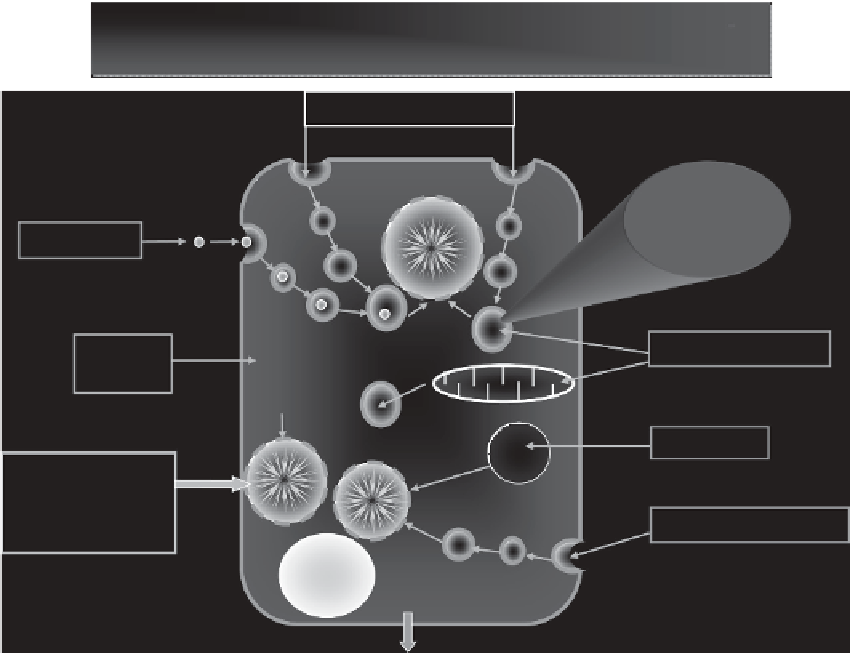Biology Reference
In-Depth Information
Cellular uptake, behavior and effects of organic
chemical pollutants
Hydrophilic
Fluid phase
Bound to membrane protein
Endocytosis
Oxidative
damage
Endo-
cytosis
Lipophilic
Bound to natural particles,
nanoparticles, or colloids
Reactive
metabolites
form protein
and DNA
adducts
Lysosomes
Slightly lipophilic
Slightly
lipophilic
Autophagy
Mitochondrion
Autophagy
Lipophilic
Lysosomes
Lysosomes swell,
become unstable
and leak, causing
cell injury and death
Lipid
droplet
Autophagy
Extremely lipophilic
Bound to
membrane lipid
Nucleus
Endocytosis
MDR
Excretion
FIGURE 5.3
Diagrammatic representation of the various routes of uptake (both diffusion and endocytotic) of contaminant
xenobiotic chemicals into the cell that can result in their accumulation in the lysosomal compartment, based
on their physical chemical characteristics. (Modified from Moore, M.N. et al.,
Mutat. Res
., 552, 247-268, 2004a;
Moore, M.N. et al.,
ICES Techniques in Marine Environmental Sciences
(ICES, Copenhagen), 36, 1-31, 2004b; Rashid,
F. et al.,
Histochem. J.
, 23, 450-459, 1991.)
Exposure of mussels to copper and some PAHs also results in increased ROS, as also does
reimmersion in seawater following a period of anoxia as described above (Regoli 2000;
Livingstone 2001; Moore et al. 2007). Reimmersion following anoxia is probably analogous
to reperfusion injury (Robin et al. 2007). Copper exposure also increases the concentration
of protein carbonyls and lipofuscin (Kirchin et al. 1992; Moore et al. 2007). Lushchak (2011)
provides a recent account of the many other pollutants that can enhance ROS levels in
aquatic animals, including a variety of trace metals, pesticides, and oil products.
5.4.3 Environmental Stress and Failed Autophagy Leading to Pathology and Disease
Autophagy is implicated in many disease processes, cell death, and adaptive responses
(Cuervo 2004; Levine 2005). This group of at least three related processes (i.e., macro- and
microautophagy and chaperonin-mediated autophagy) is essential for maintenance of cel-
lular homeostasis (Cuervo 2004), and morphological evidence has long indicated that
lysosomal autophagy is a highly conserved mechanism evolutionarily (Cuervo 2004).

Search WWH ::

Custom Search